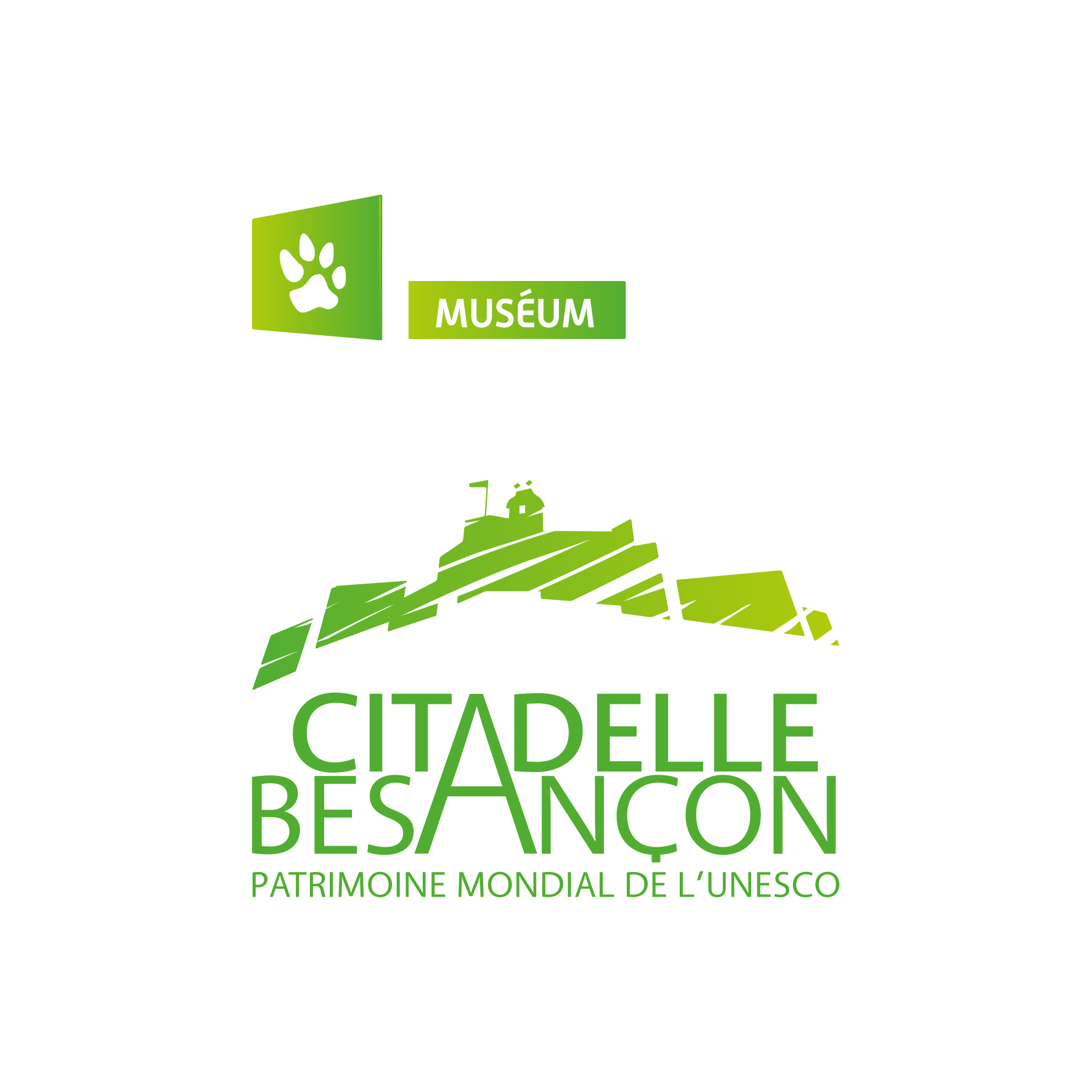
Natural History Museum of Besançon
Located in a citadel overlooking the city and adjacent to the zoo, the Besançon Museum is home to particularly diverse natural history collections that encompass over 1million specimens and samples.
The Besançon Museum follow the same missions as any scientific or museum institution: promote, preserve, and study. The museum distinguishes itself with a permanent exhibition in 6 rooms named “Naturalium”, opened since 2017. Visitors coming to the Citadel, considered as Franche-Comté tourist’s hotspot, are thus being made aware of the national and international biodiversity, their constant evolution, the existence of threats to the environment and species, as well as actions taken to safeguard and protect them.
The museum preserves national heritage collections, most of them originating from the Franche-Comté University. The long and diverse history (since 1793) of the natural history museum of Besançon coupled with its continuous enrichment, yielded a variety of objects as well an important number of specimens and samples (1.2millions). Authentic treasures are hidden inside the various collection of zoology, osteology, entomology, botany, paleontology, scientific instruments and non-European ethnology… Scientific valorization of this fonds is a lengthy process, that is helped and boosted by digital project such as the RECOLNAT portal. Several projects involving the paleontology and botany collection are under way.
Since the end of the 20th century, the Museum preserves the herbaria of the former Institut de Botanique and of the l’Université (Botanical Institute of the Franche-Comté University). This collection, assembled over 200 years, gathers hundreds of herbaria, of which 30 are of great scientific value (herbaria of botanists such as Philibert Babey, Eugène Michalet, Charles Grenier, Paul Constant Billot and Charles Contejean, Jacques-Louis Hénon, Louis Paillot etc.).
A first sorting was undertaken at the beginning of the 2000s, in partnership with Conservatoire botanique nationale de Franche-Comté (Franche-Comté National Conservatory), to establish the scientific value of this collection that encompass over 700,000 parts/sheets. A large amount of this fonds can be mined for scientific and historical data, with most items coming from the region. Around 300,000 sheets have been numerised in 2 phases by the national project e-ReColNat. The building renovations, undertaken for the establishment of the permanent exhibition, were the prefect opportunity to redistribute parts of the collections in new and improved storerooms, with a specific study space for researchers and volunteers.
Lastly, the Museum activity, redefined within the framework of its new Scientific and Cultural project, includes in its development major societal issues on the “earth” ecosystem and its biodiversity.
You can follow news about he the Museum on Facebook : https://www.facebook.com/MuseumBesancon
For additional information, you can email the collection head curator: apolline.lefort@besancon.fr
Alphonse Carestia herbarium (19th century, collects done near Saint-Amour, Jura), partly numerized. Well documented and well preserved. ©MuseumBesancon

Excerpt from a cryptogam herbarium. ©MuseumBesancon
Madame de Chaponay herbarium. Stylish leather notebook. ©MuseumBesancon
The botanical collection storeroom. ©MuseumBesancon
First room of the Naturalium (permanent exhibition space): deep dive into biodiversity. ©MuseumBesancon

Mounted skeleton of a mandrill (Mandrillus sphinx Linné 1758; 2005-02-1237) ©MuseumBesancon
Paleontology and osteology collection storeroom. ©MuseumBesancon

Ammonite Paratype - Callovian (Reineckeia pseudogreppni Bourquin 1968 ; 2020-1-2)
©MuseumBesancon
Celebrations during the Biodiv’ weekend in 2018, communication on biodiversity and reception of local and regional naturalists, and partner organizations. ©MuseumBesancon

Aerial view of the Citadel ©Ville Besançon